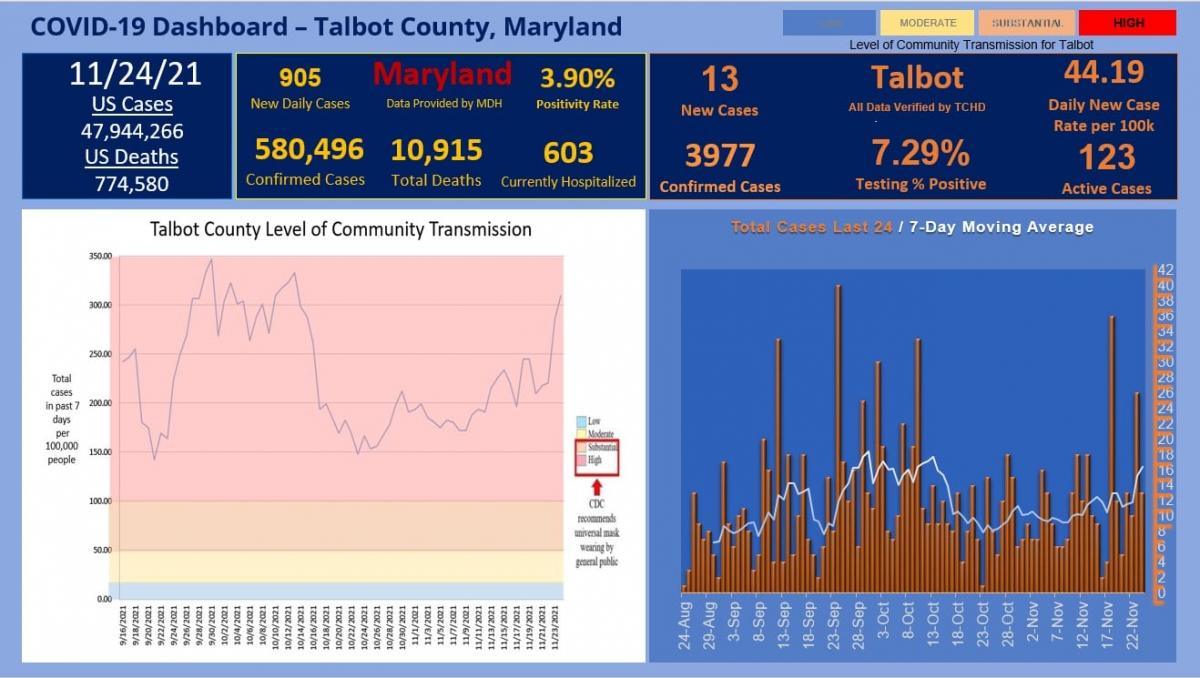With COVID-19 numbers increasing in recent weeks, the CDC is offering suggestions on safer ways to celebrate the holidays.
The best way to minimize COVID-19 risk and keep your family and friends safer is to get vaccinated if you’re eligible, according to the CDC. This is particularly important for holidays and other family events where many generations gather.
The CDC offers these general tips:
• Protect those not yet eligible for vaccination such as young children by getting yourself and other eligible people around them vaccinated.
• Wear well-fitting masks over your nose and mouth if you are in public indoor settings if you are not fully vaccinated.
• Even those who are fully vaccinated should wear a mask in public indoor settings in communities with substantial to high transmission.
• Outdoors is safer than indoors.
• Avoid crowded, poorly ventilated spaces.
• If you are sick or have symptoms, don’t host or attend a gathering.
• Get tested if you have symptoms of COVID-19 or have a close contact with someone who has COVID-19.
If you are considering traveling for a holiday or event, visit CDC’s Travel page to help you decide what is best for you and your family. CDC still recommends delaying travel until you are fully vaccinated.
• If you are not fully vaccinated and must travel, follow CDC’s domestic travel or international travel recommendations for unvaccinated people.
• If you will be traveling in a group or family with unvaccinated people, choose safer travel options.
• Everyone, even people who are fully vaccinated, is required to wear a mask on public transportation and follow international travel recommendations.
Special considerations:
• People who have a condition or are taking medications that weaken their immune system may not be fully protected even if they are fully vaccinated and have received an additional dose. They should continue to take all precautions recommended for unvaccinated people, including wearing a well-fitted mask, until advised otherwise by their healthcare provider.
• You might choose to wear a mask regardless of the level of transmission if a member of your household has a weakened immune system, is at increased risk for severe disease, or is unvaccinated.
• If you are gathering with a group of people from multiple households and potentially from different parts of the country, you could consider additional precautions (e.g., avoiding crowded indoor spaces before travel, taking a test) in advance of gathering to further reduce risk.
• Do NOT put a mask on children younger than 2 years old.
“By working together, we can enjoy safer holidays, travel, and protect our own health as well as the health of our family and friends,” the CDC states on its website.
The Spy obtains information for the above chart between 11 a.m. and 2 p.m. Statewide data is updated about 10 a.m. each day; counties may update data throughout the day until 5 p.m., although some counties do not update on weekends. Johns Hopkins updates its data throughout the day.
Key points for today
• Talbot County’s level of community transmission of COVID-19 is high. Everyone should wear a mask in public indoor settings when the community transmission level is substantial or high, according to the CDC.
• You can use the COVID-19 County Check Tool for a snapshot of your county’s level of community transmission over the past 7 days. The tool also displays guidance on masking based on how the virus is spreading in your county.
• The county’s 7-day average positivity rate is 7.29%. The state’s 7-day average positivity rate is 3.9%.

Vaccinations
• CDC 18+ population with at least one dose : 88.4%
• To pre-register for a vaccine appointment, visit www.marylandvax.org or covidvax.maryland.gov or call 1-855-MD-GOVAX (1-855-634-6829).
• State Vaccine Information Page: https://coronavirus.maryland.gov/pages/vaccine
• Vaccination Site Search: https://maryland.maps.arcgis.com/apps/instant/nearby/index.html?appid=0dbfb100676346ed9758be319ab3f40c



